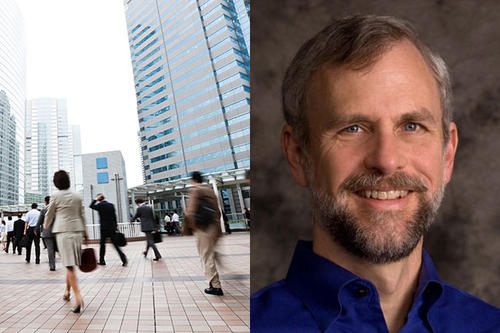
The May 2018 jobs report shows the national unemployment rate is at 3.8 percent, matching April 2000 as the lowest level since 1969. This has raised concerns about a labor shortage as the number of people not working climbs.
Joe Ritter, associate professor in the Department of Applied Economics in the University of Minnesota’s College of Food, Agricultural, and Natural Resource Sciences, explains how employers can adapt to these conditions.
Joe Ritter, Ph.D.
“Since late 2009, the unemployment rate has fallen from about 10 percent to about 4 percent. A less widely known fact is that the character of unemployment has changed even more radically.
In April 2010, 46 percent of those unemployed had been unemployed for more than six months. By April 2018, that figure was down to only 20 percent.
Part of what’s behind both figures is the number of people who were unemployed because they’d lost their jobs declined from 10 million to only 3 million. Unemployment is now much more likely to have resulted from people quitting or deciding to enter the labor force.
All of this good news has raised concerns about a national labor shortage.
The labor force participation rate—the fraction of the population working or looking for work—is at its lowest level since the late 1970s. At a time when jobs seem easy to get, why are so many people not interested? The one-word answer: demography.
Recent research by Alan Krueger points to two key factors. First, a larger and larger part of population is moving into times of life when people have always been less likely to work—those Baby Boomers whose retirement we’ve been hearing about for decades. Second, young people have been staying in school longer and longer on average.
Broadly speaking, there are two ways employers could adapt to these conditions. Most immediately they can try to draw workers back into the labor force by improving compensation or working conditions. In the past some employers were able to attract immigrants, but that channel seems to be largely shut down at present. Over a longer horizon, employers will continue to replace workers with computers and robots. This will be most profitable in occupations with worker shortages.”
Joe Ritter, Ph.D., is an associate professor and Director of Graduate Studies in the Department of Applied Economics, College of Food, Agricultural, and Natural Resource Sciences. Currently, his research focuses on earnings inequity and the health impact of long-term unemployment, among others.
Contact information
Joe Ritter
[email protected]
(o) 612-625-0442
About University of Minnesota experts:
University of Minnesota experts can provide commentary, insights and opinions on various news topics. See selected experts on UMN’s Experts Guide or inquire about additional experts via email at [email protected].
Media note:
The University of Minnesota Twin Cities is equipped with a VideoLink ReadyCam® studio for live or taped HD television interviews with our experts. To arrange an interview, contact the University News Service at (612) 624-5551 or [email protected].
- Categories:
- Business and Management





